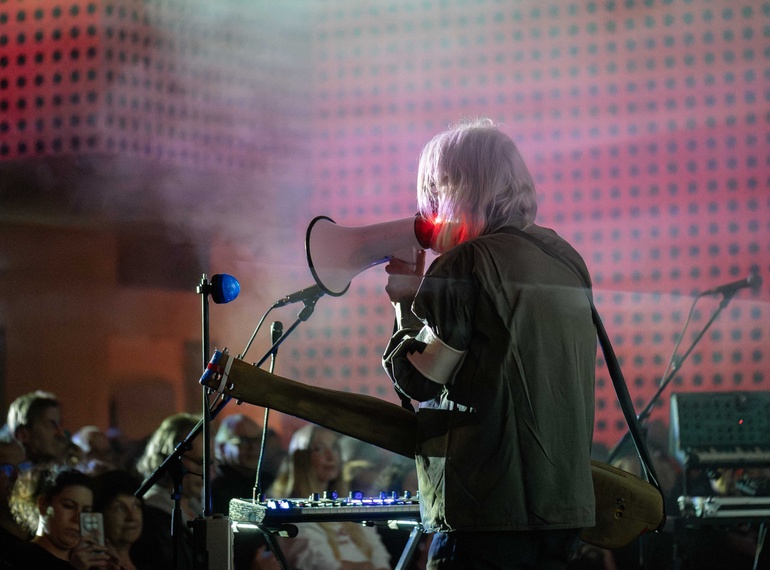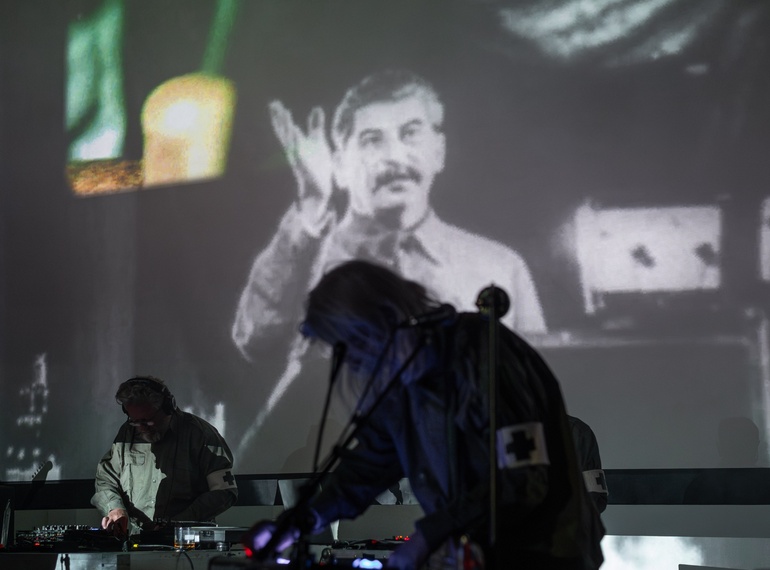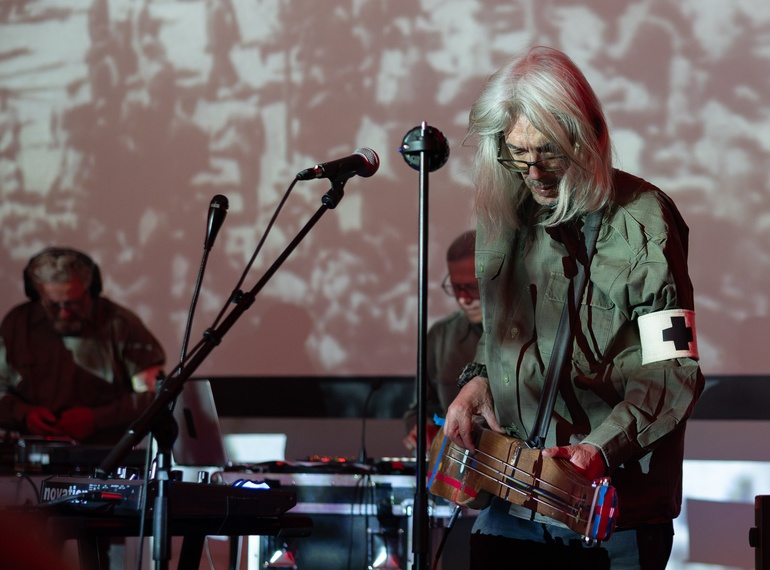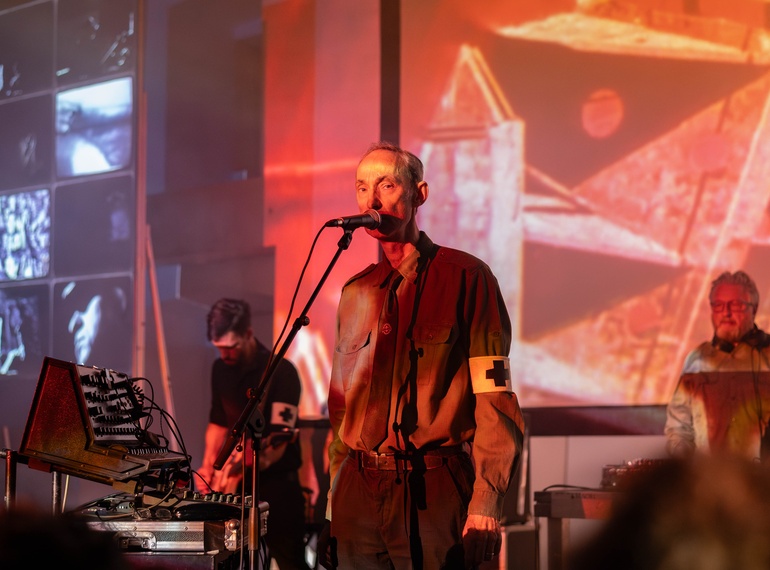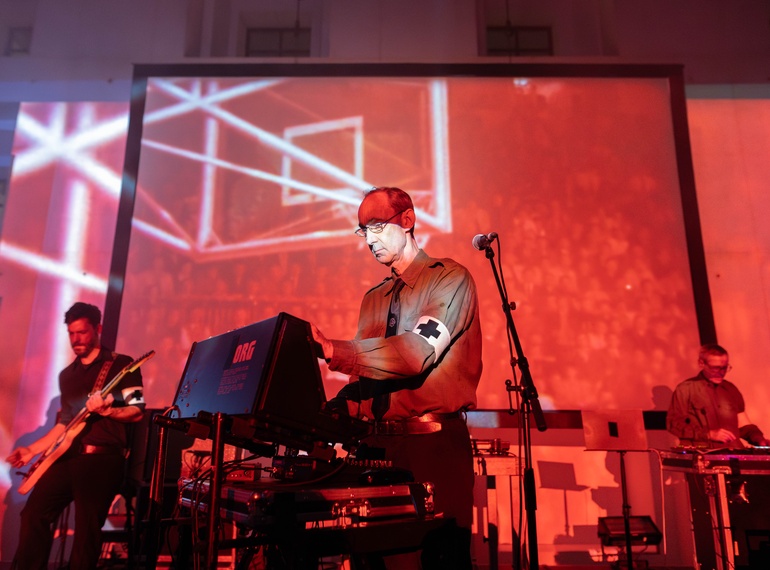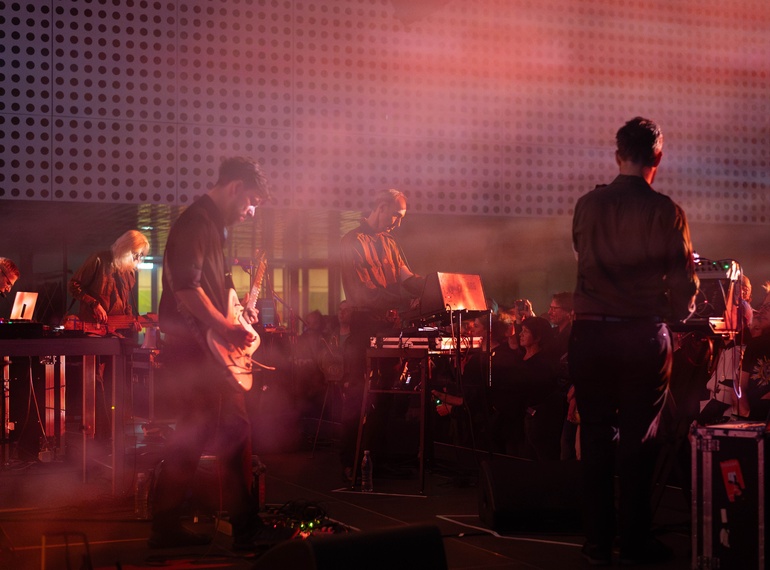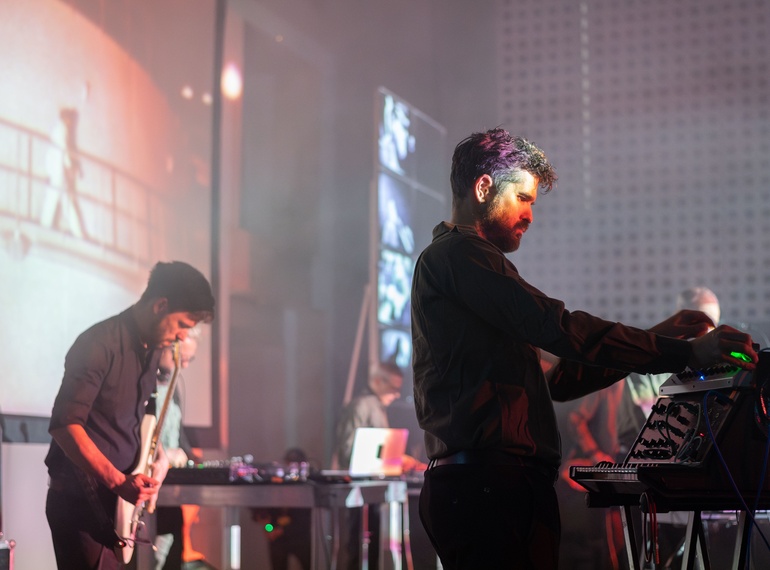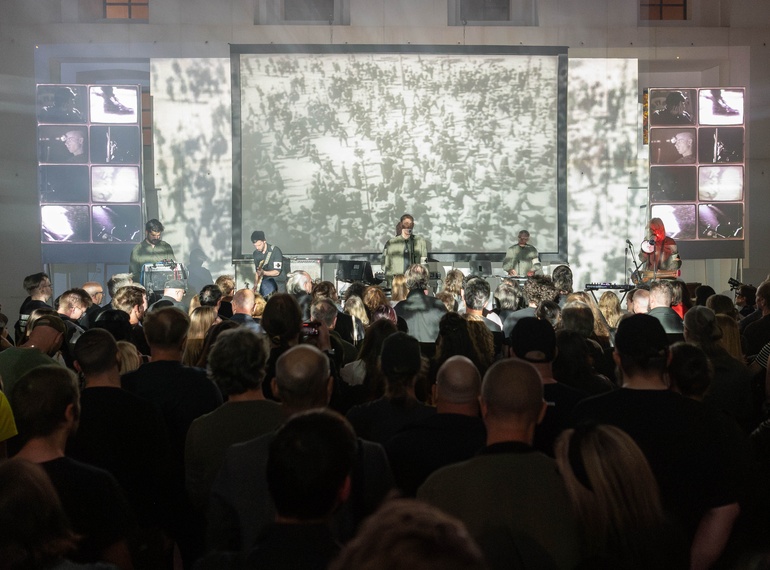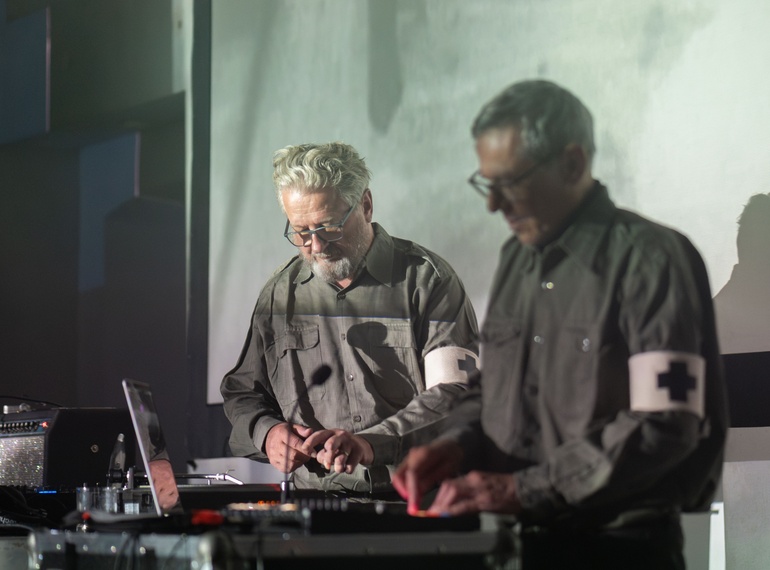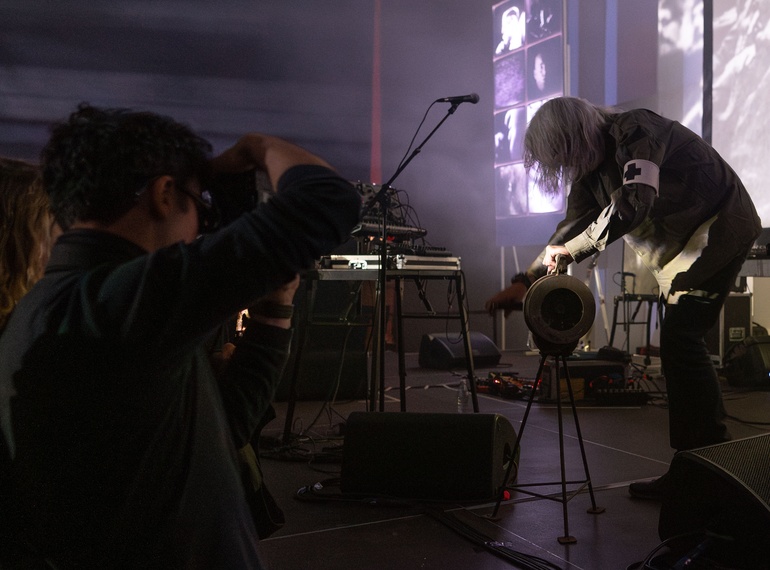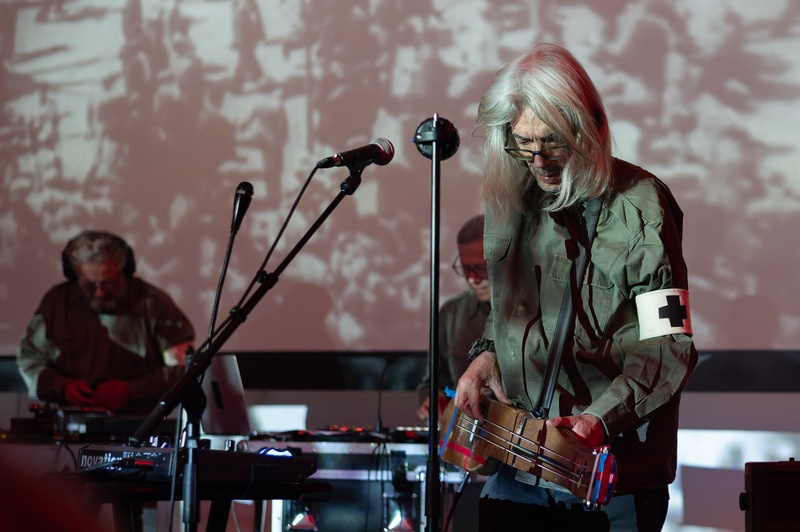
Reconstruction of Laibach's historic 1983 concert at the Music Biennale Zagreb—an event that led to their ban from 1983 to 1987.
On 23 April 1983, Laibach, together with the English bands Last Few Days and 23 Skidoo, managed to get themselves into the programme of the prestigious and esteemed Zagreb Music Biennale. The concert entitled "We Forge the Future" was arranged to run from 12 midnight to 5 am in the Moša Pijade Hall. For this performance at the traditionally avant-garde biennial, the group prepared a special multimedia concert, which included 12 video monitors on stage and film projections behind it. During the performance, Milan Ljubić's documentary Revolucija još traje (The Revolution Goes On) from 1971 was screened on a 16 mm projection, glorifying the exploits of socialist Yugoslavia. At the same time, Laibach projected a Super 8 mm loop, displaying a scene from a pornographic film, onto the same screen. This projection, for instance, also brushed against a clip of Tito speaking. Meanwhile, Laibach's experimental original video "Morte ai s'ciavi" was played on the video monitors. In the middle of the concert, at around 3.30, the police burst onto the scene and tried to break up the concert, which culminated with the military police coming right onto the stage. In complete chaos (the members of Laibach, dressed in Yugoslav army uniforms, refused to leave the stage and continued playing despite the central sound system being switched off, joined by two other bands), they managed to bring the concert to a forced halt at around 4.33.
A political campaign was then launched against Laibach. The Presidency of the Republican Conference of the League of Socialist Youth of Croatia and the Socialist Alliance of the Working People of Croatia protested to their Slovenian counterparts against the group, which led to a media campaign in Slovenia (the famous interview with the members of the group on RTV Ljubljana in 1983 ...) and then to a ban on Laibach's performances, which lasted until 1987.
From 28 June 2017 to 8 January 2018, the Reina Sofía Museum in Madrid hosted a retrospective exhibition entitled NSK from Kapital to Capital. Neue Slowenische Kunst – An Event of the Final Decade of Yugoslavia, first presented by Moderna galerija Ljubljana in 2015. On 27 June 2017, the exhibition was opened by the President of the Republic of Slovenia, Borut Pahor, and King Philip VI of Spain. (At the same time, a major Picasso exhibition was also on view at the museum to mark the 80th anniversary of Guernica, which has its home in this famous museum.) As part of the NSK exhibition, the Reina Sofía Museum invited the Laibach group to re-stage the performance We Forge the Future as part of The Uses of Art, an international programme by the L'Internationale network.
On this occasion, the members of the group had a casual photo session in front of Picasso's Guernica. They wanted to use this photo for the cover of the album We Forge the Future, which later featured a concert from the Reina Sofía. They obtained permission from the museum without any problems, but Picasso's heirs did not allow the photo to be used, imposing impossible conditions. Laibach then decided to create and use "their own" version of Guernica for the occasion, inspired by the partisan prints of Nikolaj Pirnat. Several versions of this motif were produced, including one in the form of a carpet woven by an Afghan family from Kabul.
The Barbarossa project was created by Laibach in cooperation with A/POLITICAL.
